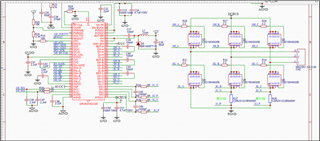Hi Team,
The customer is using DRV8301 and found out that they could not get the accurate current value from the sampling resistor. They tried to connect an external galvanometer to provide an accurate current to the sampling resistor but they found that the values they got were very different. At 500mA, it was almost accurate, but when the current was increased to 1A, their master calculated a current of 1.3a, and as the current increased, the measurement deviation increased.
The customer would like to know if there is any calibration mechanism for DRV8301? The magnification they currently use is 80 times and the sampling resistance is 0.5 milliohms. The schematic diagram of the customer circuit is shown below.
Would you kindly help to analyze it and give some suggestions? Thank you very much!

Regards,
Marvin


